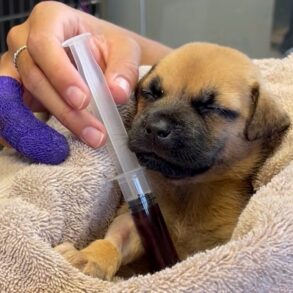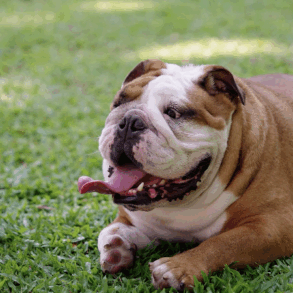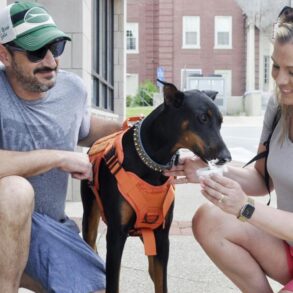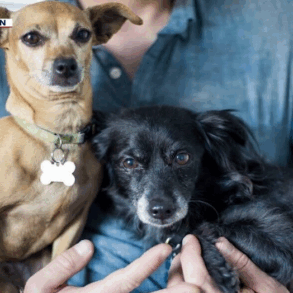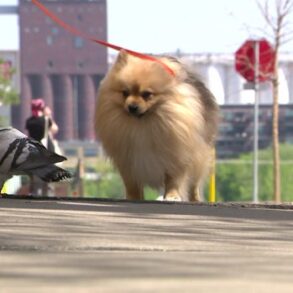
A lot of recent research has confirmed that there are stress-reducing benefits when people have positive encounters with dogs. It is this effect that accounts for the increasingly widespread use of therapy dogs. Such mood-boosting outcomes are particularly noticeable when it is children who are interacting with dogs. A team of researchers led by Gitanjali E. Gnanadesikan at the University of Arizona’s School of Anthropology believes that they have uncovered a biological mechanism that helps to explain the improvement of the mood of children in such human-canine social encounters.
A Mood-Improving Hormone
According to the results of this new research, the important biological factor is a hormone called oxytocin. You may have heard about this chemical compound in press reports that refer to it as the “love hormone.” It has earned this name mainly because it is released when we are excited by our sexual partner and when we fall in love. It also seems to be involved in the bonding between a mother and her infant child.
Oxytocin is controlled and released by activities in the hypothalamus (a part of the brain that plays a role in functions like heart rate, body temperature, and digestion) and the pituitary gland (a small, pea-sized gland located at the base of the brain below the hypothalamus that regulates hormonal and glandular functions). Its psychological effects, however, are much more widespread than the issues brought up in Valentine’s cards.
Research shows that oxytocin is associated with a broad variety of prosocial emotional states. These are social behaviors that benefit other people and promote cooperative social interactions such as helping, showing empathy and trust, and promoting a warm and supportive relationship with other people (or animals).
A particularly important, and sometimes overlooked, benefit of oxytocin is that it has antidepressant effects. Some research over the past decade has suggested that a deficit of oxytocin may even be involved in the pathophysiology of depression in people.
Oxytocin, Children, and Dogs
This latest investigation involved 55 children aged between 8 and 10 years. They were tested at the Arizona Canine Cognition Center, and each child made three visits to the center during which they had different experiences. In one session, these children played with their own pet dogs; in another, they played with an unfamiliar but friendly and tolerant dog; and in a third visit, they got to play with various toys, but no dog was present.
In each session, the research team measured the oxytocin levels in the saliva and urine of each of the participant children.
In the analysis of the results, the researchers compared each of the conditions involving a dog with that involving solitary play (with no dog present). The interactions with the child’s familiar pet dog caused a noticeable surge in the concentration of oxytocin measured in their saliva. Of particular interest is the fact that playful interactions with the friendly and supportive, but unfamiliar, dog also caused an increase in oxytocin to an almost equal level.
What Was the Effect on the Dogs?
One of the unique aspects of this particular investigation was that the researchers also measured the oxytocin levels of the dogs involved and, in addition, they measured the presence of corticosteroids (hormones associated with stress). I doubt that many people would be comfortable if we got stress reduction for the humans with the cost being increased stress in the dogs who are providing us with support.
For the pet dogs, the play interactions resulted in a boost in the level of oxytocin that mirrored that observed in the children. There was also a reduction in the concentration of stress hormones in the dog’s blood. This suggests that interactions between a canine and a familiar and friendly person are just as rewarding for the dog as for the human. (There was only one unfamiliar dog who was used for all 55 of the children tested, so given that many exposures with different individuals, it was not sensible to try to interpret hormonal changes in the case of this dog.)
What Are the Implications of These Results?
In the United States, approximately half of all households with children also have pet dogs. There is a growing body of evidence that shows that pet ownership is associated with increased emotional health in child development and that dogs are often a really important feature in children’s social networks. The authors conclude, “To our knowledge, this study provides the first evidence for an effect of affiliative social interactions with dogs on oxytocin concentrations in children.”
So if your child is feeling a bit depressed or stressed, a play session with the family dog might get enough oxytocin flowing to offset some of those psychological symptoms. An additional benefit is that oxytocin is one of the few hormones that have a positive feedback loop. This means that the release of oxytocin leads to actions that stimulate your pituitary gland to release even more of it. In contrast, most hormones create negative feedback loops after they’re released, meaning that your body releases less of the hormone after it has its initial effect. The upshot of this is that 20 or 30 minutes of play or simply affectionate social interactions with a dog may result in several hours after where the raised oxytocin level can provide a safe and natural antidepressant and mood-boosting effects.
This research suggests that playing with a dog is an inexpensive and pleasant intervention that you can try when you have a child suffering from “the blues.”
Copyright SC Psychological Enterprises Ltd. May not be reprinted or reposted without permission.
This post was originally published on this site be sure to check out more of their content.










